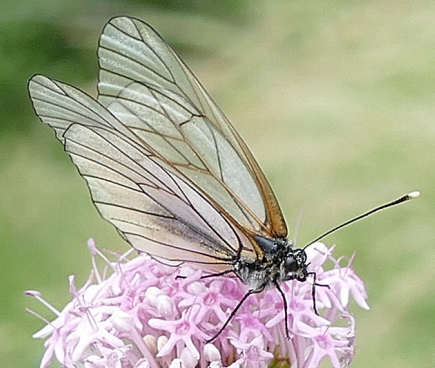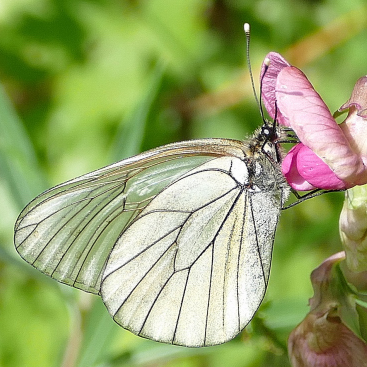Check the ingredients!
... live healthy!


| "Descrizione" by Whiz35 (11828 pt) | 2023-Sep-12 11:50 |
| Evaluation | N. Experts | Evaluation | N. Experts |
|---|---|---|---|
| 1 | 6 | ||
| 2 | 7 | ||
| 3 | 8 | ||
| 4 | 9 | ||
| 5 | 10 |
Aporia crataegi (Black-veined White) belongs to the family Pieridae and is found in tropical Africa, Europe and Asia, at altitudes between 500 and 1,500 meters.
It is occasionally found in wet areas with grassy vegetation at the sunny edges of forests, as well as in grassy woodlands. Its larvae feed on peas, and adults appear twice a year from April to May and June to July.
The population of this butterfly has drastically declined in Mediterranean regions since 1998 (1).
The recent increase in temperature has shifted the survival limit of this butterfly from 500 meters to 900 meters (2).

Distribution. This butterfly graces regions spanning Europe, Asia, and North Africa, with its presence noted from lowlands to mountainous zones.
Morphology.
Size: The butterfly showcases a wingspan ranging from 6 to 8 cm.
Weight: Butterflies, in general, are lightweight creatures, and although there isn't a recorded specific weight for the Black-veined White, it's estimated to weigh a few grams.
Colors: It displays pure white wings, adorned with distinctive black veins, creating a conspicuous lattice across each wing.

Life Cycle. The Black-veined White experiences a full metamorphosis. Host plants for its caterpillar stage encompass hawthorn (Crataegus), Prunus, and Malus.
Dietary Habits. The caterpillars favor leaves from plants like hawthorn, while the adult butterflies seek out nectar from an array of flowers.
Conservation Status. Its prevalence differs by area; in some locales, it's common, while in others, it's dwindling due to factors such as habitat loss.
References_____________________________________________________________________
(1) Konstantina Zografou, Vassiliki Kati, Andrea Grill, Robert J. Wilson, Elli Tzirkalli, Lazaros N. Pamperis, John M. Halley Signals of Climate Change in Butterfly Communities in a Mediterranean Protected Area PLoS One. 2014; 9(1): e87245. Published online 2014 Jan 29. doi: 10.1371/journal.pone.0087245
(2) Melinda L Moir, Lesley Hughes, Peter A Vesk, Mei Chen Leng Which host-dependent insects are most prone to coextinction under changed climates? Ecol Evol. 2014 Apr; 4(8): 1295–1312. Published online 2014 Mar 17. doi: 10.1002/ece3.1021
| Evaluate |